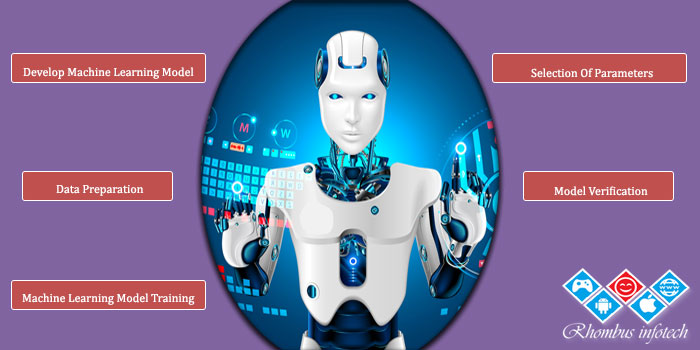What Is The Meaning Of Machine Learning Lifecycle Management
The machine learning lifecycle management refers to the cyclic procedure that is being followed by data science projects. The machine learning lifecycle steps are followed by every big business organizations, that involve three important phases of process (Pipeline development, Training stage and Inference stage) implemented by data scientists and data engineers to gain useful business insights and further to develop various intelligent applications.
The first step of machine learning process involves the transformation of unstructured or critical form of data into cleaned form. The machine learning lifecycle algorithms are entirely data driven concept because the learning process of machines are linked to data sets that are being trained.
Important Steps Involved In Machine Learning Lifecycle Management
- Developing Machine Learning Model:
Step towards developing smart machine learning model defines the type of model based upon requirements of applications and its design attributes as per according to intended application. There are number of machine learning models can be developed such as supervised and unsupervised model, regression models, classification models, clustering and reinforcement models.
- Data Preparation:
A huge amount of structured & unstructured form of data is served as input for different machine learning purposes that have taken from various business domains such as medical care, hotel industries, travel companies, IoT based data, pharmaceutical firms etc. These huge volumes of data sets are provided at very initial stage of machine learning to yield desired data oriented best results. And the desired output results can be used in a better way for analysis objective to apply it into other machine learning applications.
- Machine Learning Model Training:
In this stage, trained data models have developed with the help of various datasets served into it & as a part of training, datasets are used to discover different parameters of machine learning which helps to decrease the intensity of errors for given data set. Hence it improves the performance of the various data models.
- Selection Of Parameters:
Selection of parameters is a crucial task associated with the training refers to as hyper-parameters as well that supervised the working efficiency of training process, ultimately leads to the successful development of learning model.
- Transfer Of Learning Methodology:
You can fetch number of benefits by reusing machine learning trained models in different business domains just to provide starting material for beginning the training process of next new model which significantly reduces the time of training.
- Model Verification Process:
In this stage a trained developed model and its subsequent output is verified model to facilitate useful information to end users to find out whether the developed model is suitable for intended application. Hence this is directly concerned with the fine working of model with the inputs that are untraceable.
- Deployment Of Machine Learning Model:
In this deployment stage, we apply different machine learning models into live processes which completely aim at to check proper functionality of the model once it deployed in a way that can be used for inference as well as it should be updated regularly.
- Monitoring Process:
It involvs the adoption of safety measures for the assurance of appropriate operation of the model throughout its complete life span that definitely requires proper management and timely update of system.
Conclusion:
Machine learning systems are becoming more popular these days as machine learning technology has become the core part of every smart device, online services and in many business industries.

